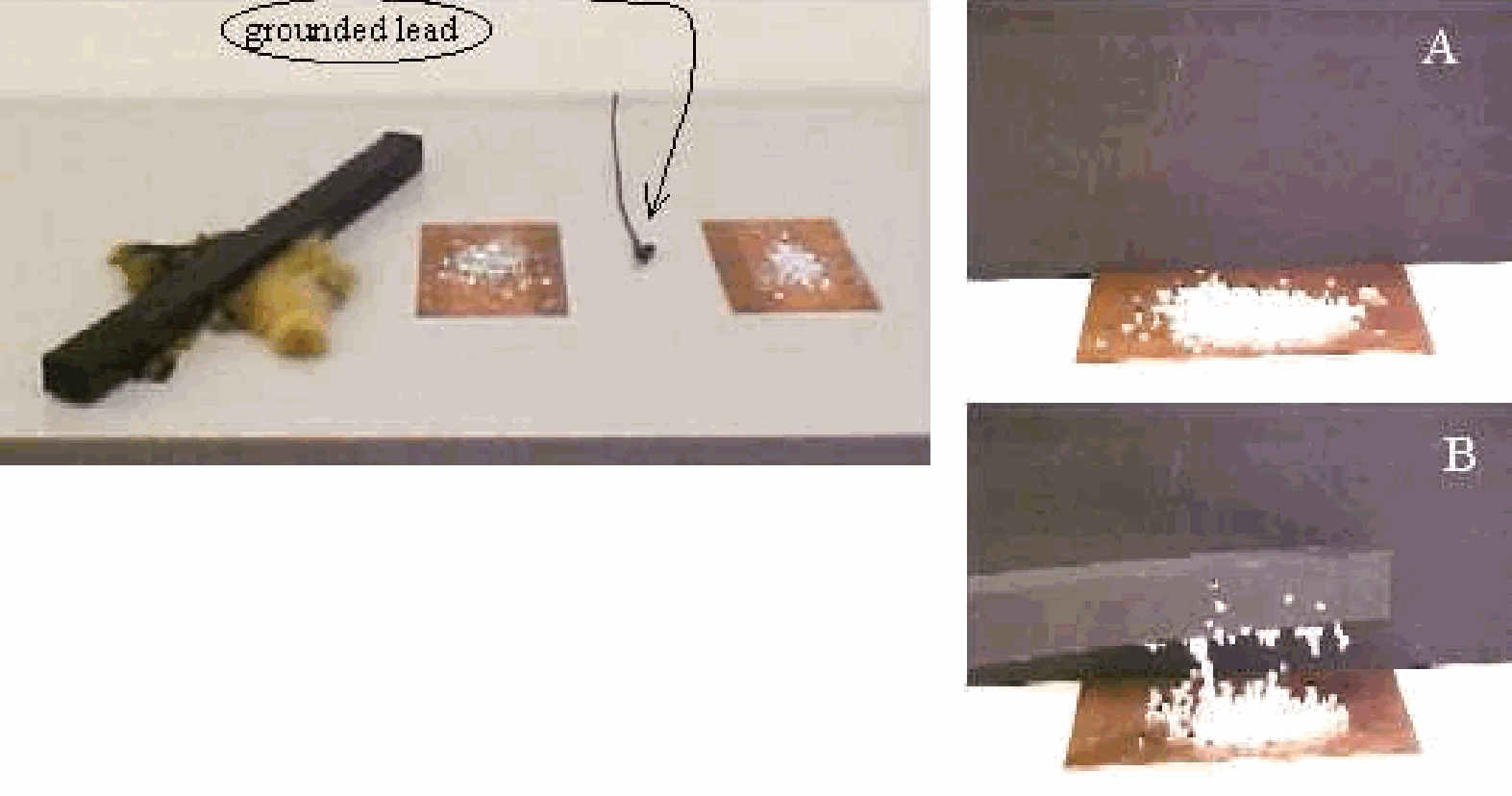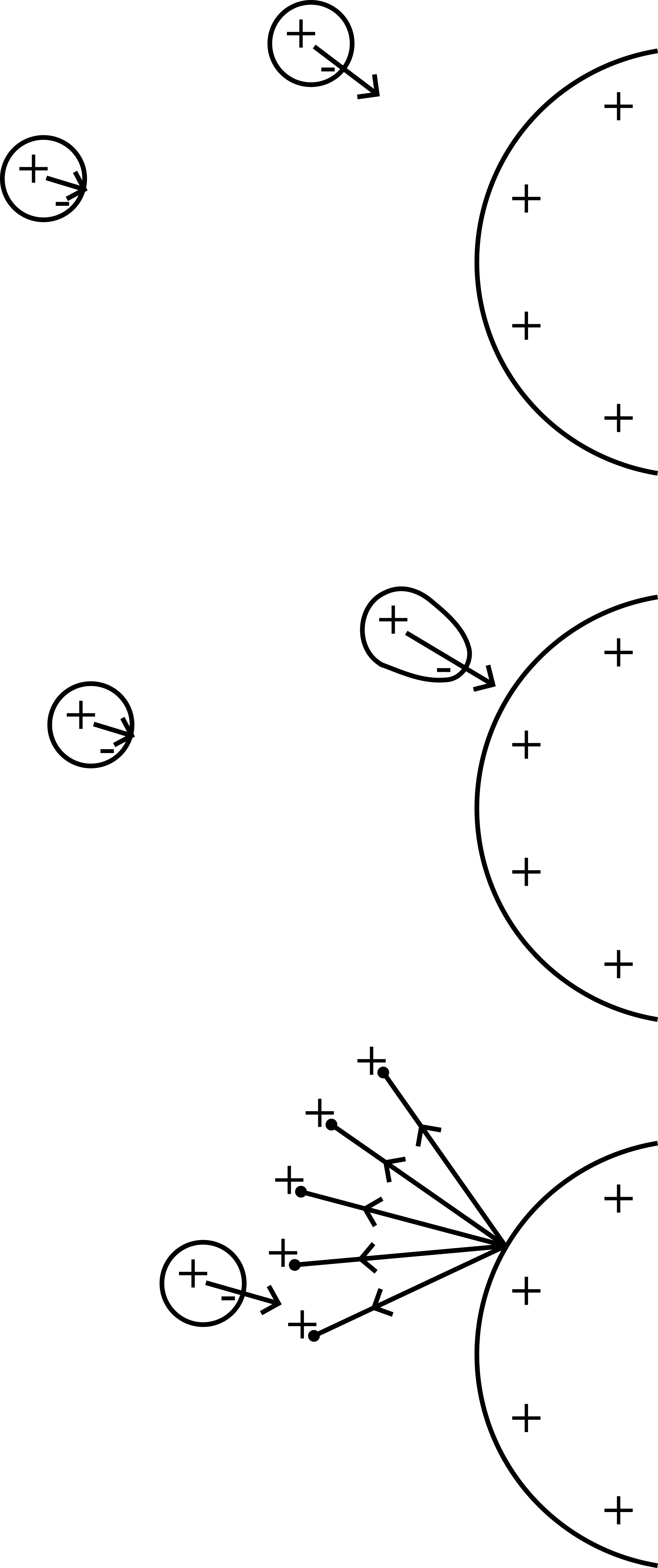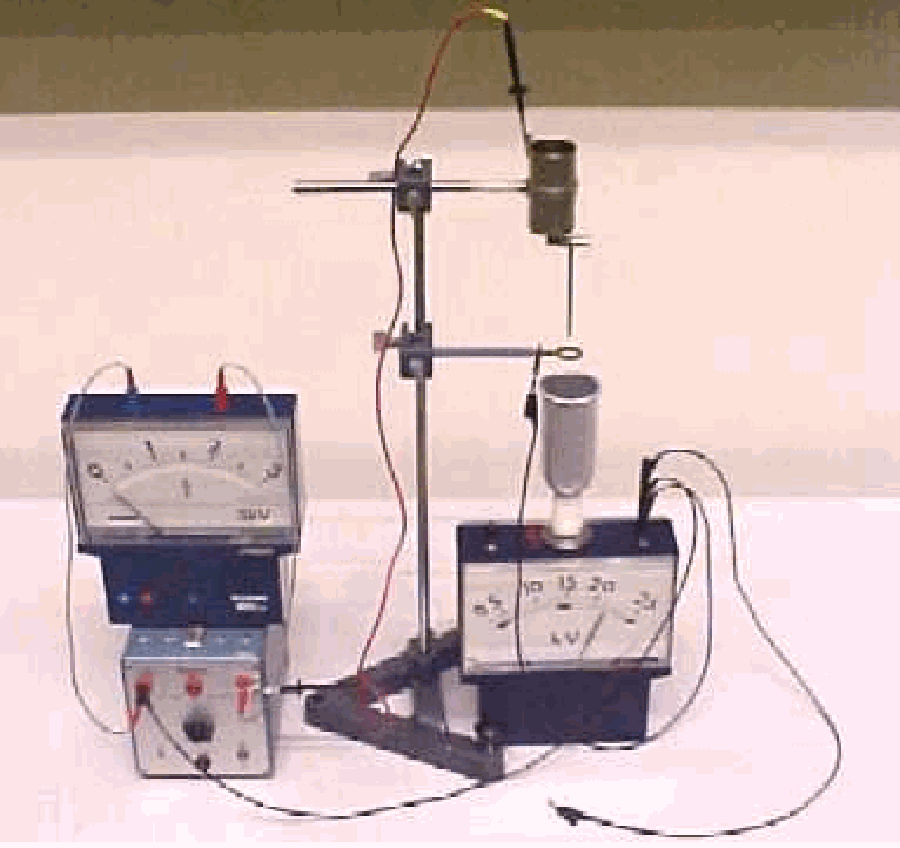04 Water Dropper (almost Kelvin water dropper)#
Aim#
To show the principle of operation of a Van der Graaff generator.
Subjects#
5A40 (Induced Charge) 5A50 (Electrostatic Machines)
Diagram#

Fig. 449 .#
Equipment#
Electroscope.
Metal beaker on top of electroscope.
Metal collar, fitted on a bar of pvc.
Metal container with pinchcock, allowing water to drip. (The holding bar is partly made of perspex for isolation.)
Power supply (about \(1 \mathrm{kV}\) ).
Camera.
Electrostatic Voltmeter (see Remarks and Figure 451).
Presentation#
Set up the equipment as shown in the Diagram (the metal collar is in the beginning turned away from the dropper; the \(+1 \mathrm{kV}\) lead is not yet connected). The power supply is adjusted to a voltage of about \(1 \mathrm{kV}\). Touching momentarily the electroscope with the \(+1 \mathrm{kV}\) lead shows that this voltage gives a small deflection (in our case 3 divisions). Discharge the electroscope.
Now the upper container is filled with water and placed about \(10 \mathrm{~cm}\) above the beaker on the electroscope. The \(+1 \mathrm{kV}\) lead is connected to it. The pinchcock is opened and drops of water fall into the beaker on the electroscope. When the upper container is connected to the power supply, the electroscope will build up the small deflection (of 3 divisions) we had before.
Now the metal collar, connected to ground, is placed around the falling drops of water. The effect is that the deflection of the electroscope increases and very soon runs off scale!
When now the collar is moved away from the falling drops of water, the electroscope will slowly return to the lower deflection it had before.
Explanation#
In the first part of the demonstration an electric field ( \(1 \mathrm{kV}\) over \(10 \mathrm{~cm}\), so \(\mathrm{E}=10 \mathrm{kV} / \mathrm{m}\) ) exists between the upper water container and the electroscope.

Fig. 450 .#
Due to this field, the drops of water will be charged when they break loose from the metal dropper (see Figure 450). When the drops fall into the beaker on the electroscope this charge accumulates (on the outside of the beaker) and the deflection of the electroscope increases. This continues until the potential of the beaker is the same as the potential of the upper water container, because now there is no longer an electric field to charge the drops of water.
When the grounded metal collar is placed around the stream of falling drops, there will be an electric field again between the collar and the upper water container and again the drops of water will be charged, and again the deflection of the electroscope increases. As long as drops of water fall, the charge on the electroscope increases!
When now the collar is removed, the electric field between the beaker and container changes direction. So, a drop of water will be charged opposite to the charge it got in the first part of the demonstration, lowering the deflection of the electroscope until the electric field between beaker and container is zero again.
Remarks#
By means of a camera the (reading of the) electroscope is projected on a monitor or large screen.
The electroscope can be replaced by an electrostatic Voltmeter (see Figure 451). Then the students can see directly that the voltage of the metal beaker can reach a voltage much higher than the voltage of the container from where the drops are falling.

Fig. 451 .#
